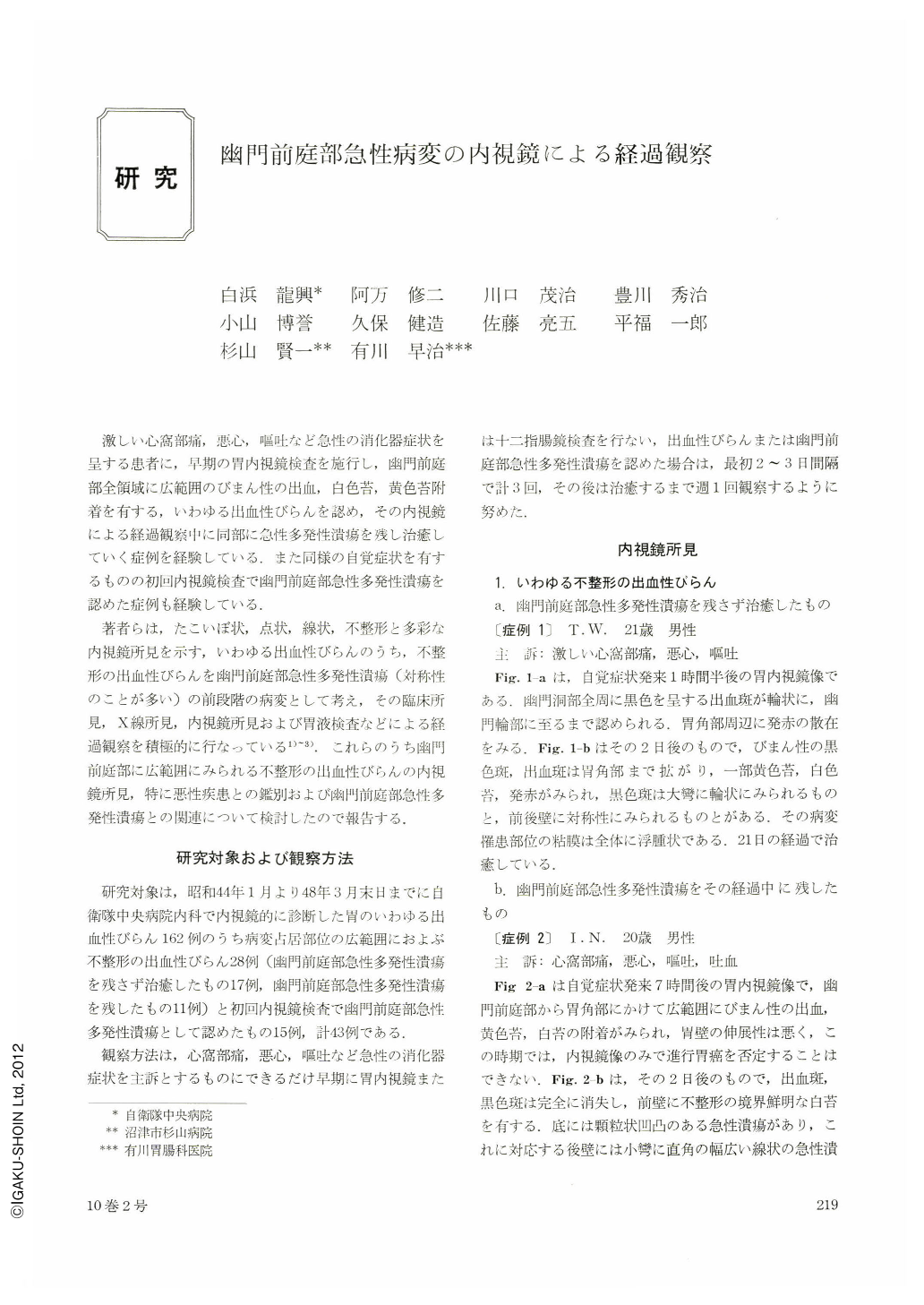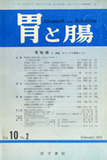Japanese
English
- 有料閲覧
- Abstract 文献概要
- 1ページ目 Look Inside
激しい心窩部痛,悪心,嘔吐など急性の消化器症状を呈する患者に,早期の胃内視鏡検査を施行し,幽門前庭部全領域に広範囲のびまん性の出血,白色苔,黄色苔附着を有する,いわゆる出血性びらんを認め,その内視鏡による経過観察中に同部に急性多発性潰瘍を残し治癒していく症例を経験している.また同様の自覚症状を有するものの初回内視鏡検査で幽門前庭部急性多発性潰瘍を認めた症例も経験している.
著者らは,たこいぼ状,点状,線状,不整形と多彩な内視鏡所見を示す,いわゆる出血性びらんのうち,不整形の出血性びらんを幽門前庭部急性多発性潰瘍(対称性のことが多い)の前段階の病変として考え,その臨床所見,X線所見,内視鏡所見および胃液検査などによる経過観察を積極的に行なっている.これらのうち幽門前庭部に広範囲にみられる不整形の出血性びらんの内視鏡所見,特に悪性疾患との鑑別および幽門前庭部急性多発性潰瘍との関連について検討したので報告する.
This report is based on an analysis of 28 wide-spread irregular-shaped hemorrhagic erosions and 15 cases of acute multiple ulcerous lesions of the antrum.
(1) We classified endoscopically hemorrhagic erosion into four types; varioliform, punctiform, linear form and irregular-shaped form, and in our experience only irregular-shaped one had a tendency to progress to acute multiple ulcerous lesions of the antrum (11/28 cases).
(2) Fifteen cases of acute ulcerous lesions observed at the first endoscopic examination might have been seen as wide-spread irregular-shaped hemorrhagic erosion by an earlier examination.
(3) To know the course of the lesion, it is important to perform endoscopy from time to time, because the picture shows daily varying findings.
(ⅰ) hemorrhagic stage: The poor distensibility of the antrum due to edematous mucosal surface with diffuse hemorrhagic depression and whitish and yellowish coat are seen almost all over the antral portion.
(ⅱ) acute ulcerous stage: The acute ulcerous lesions, punched out with irregular circumference and uneven ulcer-floor look like Ⅱc type gastric cancer.
(ⅲ) scarring stage: Rugal convergency becomes striking and elevation of mucosa resembling Ⅱa is seen at the scar's end of converging folds.
(4) The differentiation from malignancy is not so difficult if done by gastric biopsy, analysing clinical aspects and observing carefully the endoscopic course.

Copyright © 1975, Igaku-Shoin Ltd. All rights reserved.


